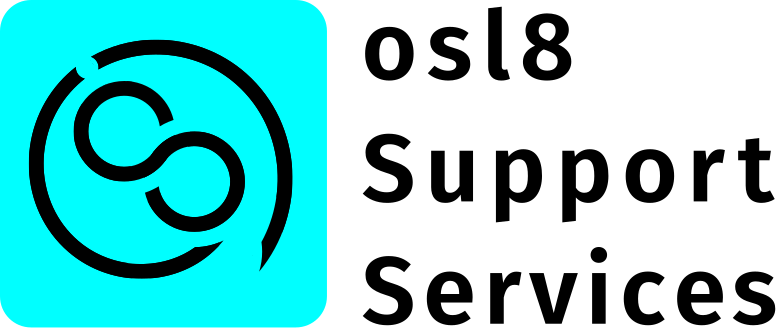This post is a bit late in coming as it would have been an excellent one to share when COVID-19 was at its peak. Still, it is relevant because of ongoing health concerns and a number of other reasons. Even if there were no infectious illnesses to contend with, there are plenty of instances when being able to get computer help without having to go anywhere or have someone sit with you is very convenient.
If you have a computer hardware problem or the problem you are having with your computer or computer peripherals (printer, etc.) is potentially complex, it might be more efficient for me or someone you trust to work on your computer related issues in-person. Moreover, if your computer is running too slow, it is infected with malware (virus, Trojan, etc.), or it is not working at all there is little choice but to have a technical support person work directly with your hardware (computer, keyboard, touch pad or mouse, etc.). Put another way, there are many cases when we must have physical access to computers, but in the age of widely accessible broadband (fast) internet there are also many cases when you can get help from a technical support person over the internet. On that note, there is a secure and reliable way that I (or another trusted osl8 Support Technician) can help you by connecting into your computer to see what you see on your screen and even control your computer.
Does that sound creepy or scary? I understand. I don’t want unauthorized people connecting to my computer at any time they please either. Fortunately, it isn’t necessary to compromise your security and safety to get the help you need without leaving your home. How does it work? Well, there are many possibilities. Some computer operating systems (OSs) like Windows already have a built-in way for someone you trust to connect into and control your computer to help you. However, I prefer to have more information and authority over the internet traffic between my computer (the one I use to provide support) and the computer of the person or organization I am helping. Additionally, I want to be able to help people using Windows (by Microsoft), Mac (by Apple), or Linux (an open source OS also sometimes called GNU/Linux). As such, I use a program called SimpleHelp. It is a secure and reliable commercial program (unfortunately, not free or open source) that allows me (or any person whom I trust) to securely connect over the internet from my computer to other computers on the internet. However, I cannot connect to just any computer on the internet at any time. That would be invasive and unethical. I must have permission from the people or organizations who own the computers before I can connect to them.
The SimpleHelp platform requires a server that I own or lease from a trusted third party and manage myself (or have a trusted associate manage). This “server” is a special computer with the sole purpose of running the SimpleHelp software all day, everyday which allows me (or other authorized individuals) to connect two different computers in two different locations (or even in the same physical location) almost anywhere in the world. There are three main different methods such a connection can happen. Those ways are:
- Remote Support (on-demand) — Someone requesting help on one or a few rare occasions downloads a SimpleHelp Remote Support program to their computer, runs it, and allows a technician (likely me) to connect to their computer, see what they see, and control their computer for the duration of their Remote Support session. When the session ends the Remote Support program closes and nobody can gain access to the client-friend’s computer until they run the Remote Support program again.
- Remote Access (any time while activated) — This allows any authorized technician (likely myself in our case) to connect into a remote computer (a computer located elsewhere) at any time the computer is on (or can be “woken”) and connected to the internet. Remote Access normally is setup on computers like office computers for which software and security updates are completed on behalf of a client-friend or client organization on a regular basis and under a (contractual) agreement.
- Remote Work (any time while activated) — Remote Work allows a direct connection from one computer into one other remotely located computer (computer in a different physical building) to allow the local computer user to perform work on the remote computer practically as thought they were sitting in front of the computer. This can be done as long as both computers are connected to the internet (via broadband or fast internet) and it is enabled in SimpleHelp by an administrator. Remote Access must be setup and enabled before Remote Work can be setup and enabled.
To reiterate an important point, in all of the above cases both the local and the remotely located computers must be connected to broadband (fast) internet in order to connect to one another. That is because too much information is sent over the internet between the computers (secured or “encrypted” information in particular) for the connection to work effectively over slower internet connections. So, if you’re using slower and/or older technologies like many satellite internet services, slow or crowded DSL internet, or even the old dial-up internet then remote assistance (as “Support”, “Access”, or “Work”) will not be possible or practical.
The above all might sound a bit complicated so let me simplify the use cases as follows:
- Remote Support — Used for occasional (infrequent) instances of remote assistance.
- Remote Access — Used for more frequent (usually weekly or more) cases of remote support or when the Remote Support option is inconvenient.
- Remote Work — Used when a regular user of an office or home office (remote) computer needs to access that computer from a different (local) computer because specific software, files, and/or other things on the remote (office/home office) computer are not available on the local computer and the user cannot physically access the remote computer when they need to use it.
Having all of these options available is nice, but two main practical questions remain:
- How much does it cost?
- How can you use it to get the help you need?
Well, right now there are monthly and yearly monetary costs for me (or osl8) to keep the SimpleHelp running, updated (security and feature updates), and able to provide all of the Remote assistance services available. There is the cost of the software itself (as of July 2021, our cost is about $360 a year) and the cost to lease the “virtual private server” (VPS) or DigitalOcean “droplet” of $6 per month (plus taxes/fees, about $80/year). Of course there’s also the upkeep (maintenance) of the server, which is mostly automated but still requires occasional intervention. I’d value that at about $1800 a year (about 30 hours/year at $60/hour). That would bring a grand total of about $2240 a year. That’s a significant chunk of change–at least it is for me!
How much will I ask you to pay for remote support? Well, that’s a bit more difficult to calculate. Supporting you or anybody else remotely does not only cost me the amounts outlined in the previous paragraph. It also costs me the time needed to help you when and how you need help. However, if I don’t need to travel to where you are to help you, that makes things more convenient for me. That basically decreases my time and energy costs (travel, etc.) required to get to and from your location. Having said all of that, my recommended pricing for remote assistance will be posted on the corresponding Remote Assistance services page. Check back here soon for the links.
If you need assistance and we come to an agreement on cost (how much you pay), then we will send you the information and instructions you need to install the Remote Support, Remote Access, or Remote Work software on your computer (likely via email or telephone). If you use a Mac computer with a newer version of macOS on it (“Mojave”–10.14–or higher), there are special instructions available here (<-click) to allow me or another trusted osl8 Technician fully access your computer to assist you.
Thank you for taking the time to explore the details of our Remote Assistance services. If you have any questions or need assistance please be sure to contact us at any time. Have an excellent day!



